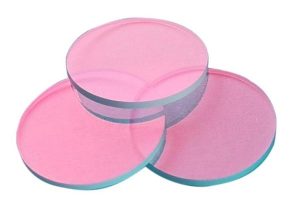Detection and Usage Methods of Filters
As an optical component, filters are also widely used in the optoelectronic industry. Filters are generally used to adjust the intensity and wavelength characteristics of light, which can filter, separate, or enhance specific wavelength areas of light. They are used in conjunction with optical lenses in multiple industries.
Next, let’s learn about the detection and usage methods of filters together.
Testing methods for filters
For the detection of filters, some technical methods are usually used, and the following are some commonly used ones:
1.Spectral analysis method
Spectral analysis method is a method of using a spectrometer or spectrophotometer to perform spectral analysis on a filter. This method can obtain the wavelength range and spectral characteristics of the filter’s transmission or reflection.
2.Chromaticity measurement method
Chromaticity measurement method is a method of measuring and comparing the color of filters using a colorimeter or spectrophotometer. This method can evaluate the chromaticity performance of filters by calculating the color coordinate values and color difference values at different wavelengths.
3.Microscopic observation method
Microscopic observation method refers to the use of a microscope to observe the surface morphology and internal structure of a filter, and check whether the filter has problems such as contamination, defects, or damage.
4.Transmittance measurement method
The transmittance measurement method can use a transmittance tester to measure the transmittance of a filter. This method mainly uses a light source to illuminate the filter, while measuring the intensity of the transmitted light, and ultimately obtaining transmittance data.
5.Polarization spectroscopy
Polarization spectroscopy mainly uses a polarization spectrometer to determine the polarization characteristics of a filter. By rotating the sample and analyzing the changes in the transmitted light intensity of the sample, the polarization conversion characteristics of the filter can be obtained.
Different types of filters will use different processes and materials, and the detection of filters can also be based on specific filter materials and application requirements by selecting one or more methods to ensure that the selected filter meets quality and performance requirements.

Filter example image
Usage of filter
Different types of filters may have different usage steps and precautions. Below are the general methods for using filters:
Choose the appropriate type.Different types of filters have different colors and functions, and the appropriate type needs to be selected based on specific needs. For example, polarization filters are mainly used to eliminate reflections and increase color contrast, while ultraviolet filters are mainly used to filter ultraviolet rays.
Insertion and fixation.After completing the selection, insert the filter in front of the camera lens or laser to ensure that it can be firmly and safely fixed in the optical path.
Adjust the position.According to the specific needs of the situation, the position of the filter can be rotated or moved to adjust the penetration angle, color, or intensity of the light. It should be noted that do not touch the surface of the filter to avoid leaving fingerprints or scratches that may affect the quality of the light.
Multiple types used together.Sometimes, in order to achieve some complex optical effects, it is necessary to use a certain filter in conjunction with other filters. When using, it is important to pay attention to the instructions to avoid misuse.
Regular cleaning.To maintain the performance and clarity of the filter, it is necessary to regularly clean the filter. When cleaning, it is necessary to use specialized lens cleaning paper or cotton cloth to gently wipe the surface of the filter. Avoid using rough materials or chemical solvents to avoid scratching or damaging the filter.
Reasonable storage.The storage of filters is also important. To extend the service life of the filter, when not in use, it should be placed in a dry, cool, and dust-free place to avoid prolonged exposure to sunlight or the influence of high temperature environments.

